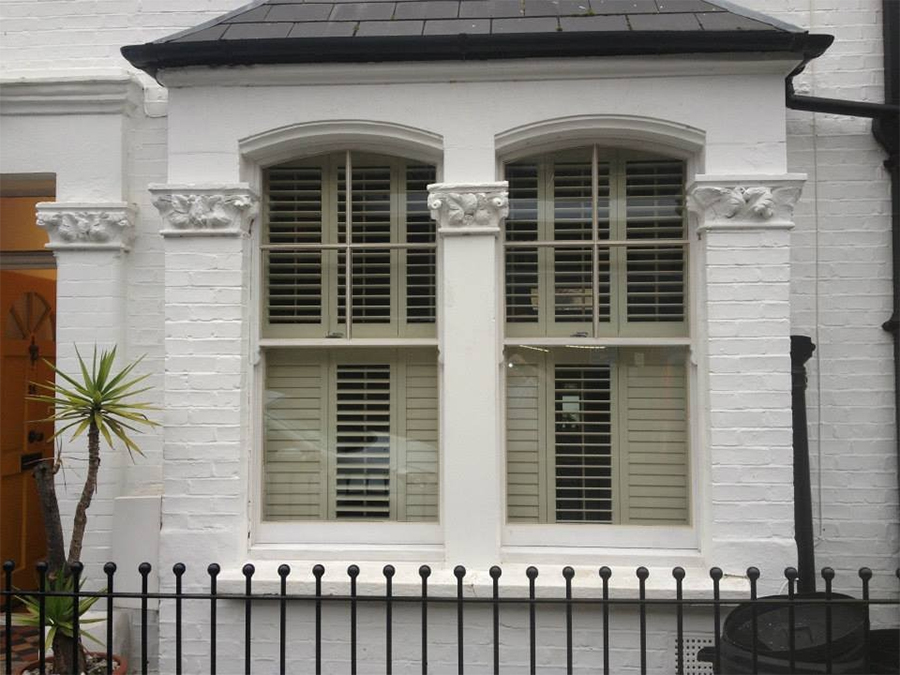If you’re the proud owner of a Georgian, Victorian or Edwardian property, you will know that sash windows are an important original feature of the building. And while no passionate defender of period architecture would condone having these windows taken out, there’s no denying that they can be draughty.
It’s the precarious combination of old age, the presence of hollow boxes and the requirement for the window elements to slide rather than abut that’s causing the problem. Did you realise that a single glazed sash window loses heat about 16 times faster than the exterior wall of a modern new build?
Replacing period sash windows with modern, more energy efficient versions is one option. However, not only can this be eye wateringly expensive, it also alters – some would say ruins – the architectural integrity of your period home. So, what are the alternatives?

Source:
- Traditional DIY insulation methods
Heavy curtains, blinds and interior shutters and similar window coverings have traditionally been used to keep the heat out, which can result in up to 50% improvement in heat loss.
Make sure the curtain fabric is thick and , ideally with several layers of curtains – you will be amazed at the difference this can make. Of course, the benefit is only felt when the curtains are closed, while the glass remains cold and can still be a source of condensation.
Heat loss prevention blinds are specially created to fit neatly around the window to reduce the amount of warm air that can escape through a single glazed window.
- Draught proofing your sash windows
Draught proofing is one of the best and most affordable ways to make sash windows more energy efficient. The process involves plugging the gaps through which warm air escapes from the building’s interior, meaning you will need less energy to heat your home and it will feel warmer as a result.
Draught proofing options include sticking masking tape over unused windows, sealing unused windows by painting them ‘shut’, or fitting routed brush strip and compression seals. The latter should be carried out by a specialist as it involves taking out the windows and routing all sliding and abutting sections.
According to Historic England, draughts through sash windows can be with simple draught proofing measures. While this is encouraging, do bear in mind that ventilation in kitchens, bathrooms, utility rooms and other internal areas with high humidity levels must still be adequate.

Source:
- Professional sash window repair
As long as they’re properly looked after, there’s no reason why the sash windows in your period home shouldn’t last for many decades, even centuries. Conversely, it shouldn’t come as any great surprise to find that neglected and poorly maintained windows won’t function as they should, the consequences of which can range from rattly, draughty windows that are difficult to open or shut, to water ingress, timber rot and material failure.
Regular maintenance is key to preserve both the beauty and functionality of these architectural features. Whether the window sill or glass needs replacing or a complete sash window renovation is required, find yourself a skilled craftsman who shares your passion for preserving these beautiful original features and will help you prolong their lifespan.
- Installing secondary glazing
Fitting secondary glazing to period sash windows allows you to preserve the look of the windows, improve insulation levels and cut down on draughts. It involves to the window to create an insulation section of air which is said to cut down heat loss by a third.
There’s a wealth of options available, starting with DIY window film that is fixed in place with the help of a hairdryer, rendering the window unopenable until it is removed after the winter. Less flimsy versions are available as polyester or acrylic sheets.
A more substantial solution are semi-permanent secondary glazing kits, consisting of glass panes in a thin aluminium frame. While these can be fitted by a competent DIYer, it is recommended to get a professional sash window expert to do this for you. They will do a better job, both in terms of ensuring a good seal to prevent draughts, and to prevent the visual appearance of your window being spoilt.

Source:
- Fitting double glazing into existing windows
If you’re unable or unwilling to replace your original sashes, it is possible to retain the existing frames and replace the single-glazing with double glazing. This may well be an acceptable solution for listed buildings where listed building consent must be obtained before any works can be carried out.
In order to replace the glass, the windows will need to be removed and heavier weights added. This is a highly skilled job that should be carried out by a professional. While they’re at it, it makes sense to have then install a brush draught proofing system at the same time.
won’t quite make it up to energy efficiency standards, but you should still be able to experience a significant reduction in heat loss.
The post appeared first on .





























